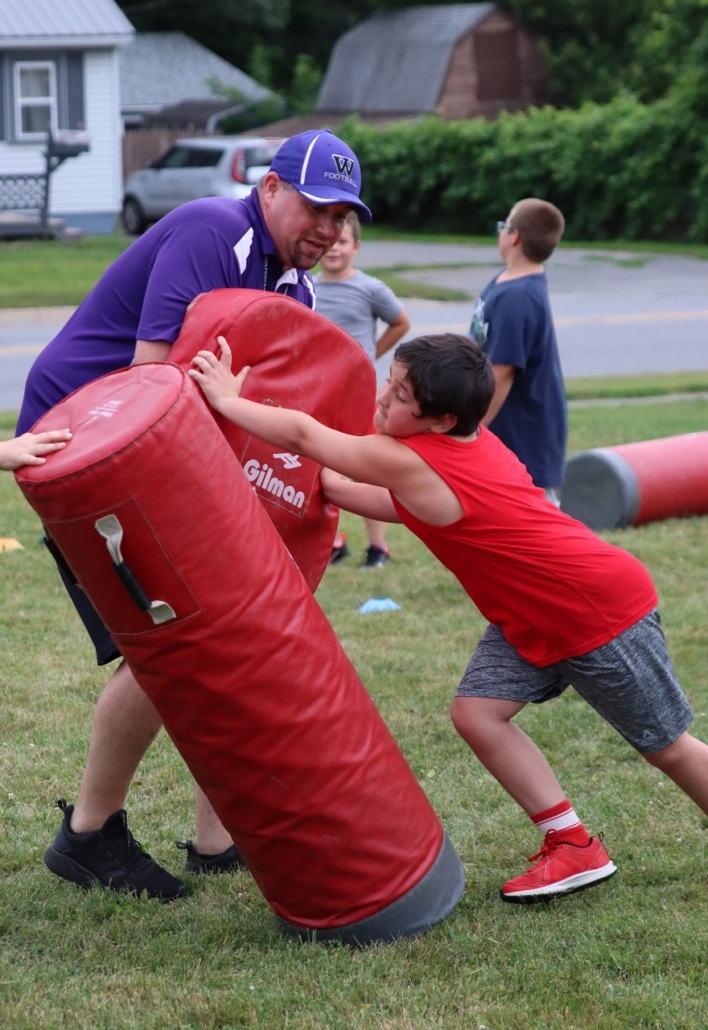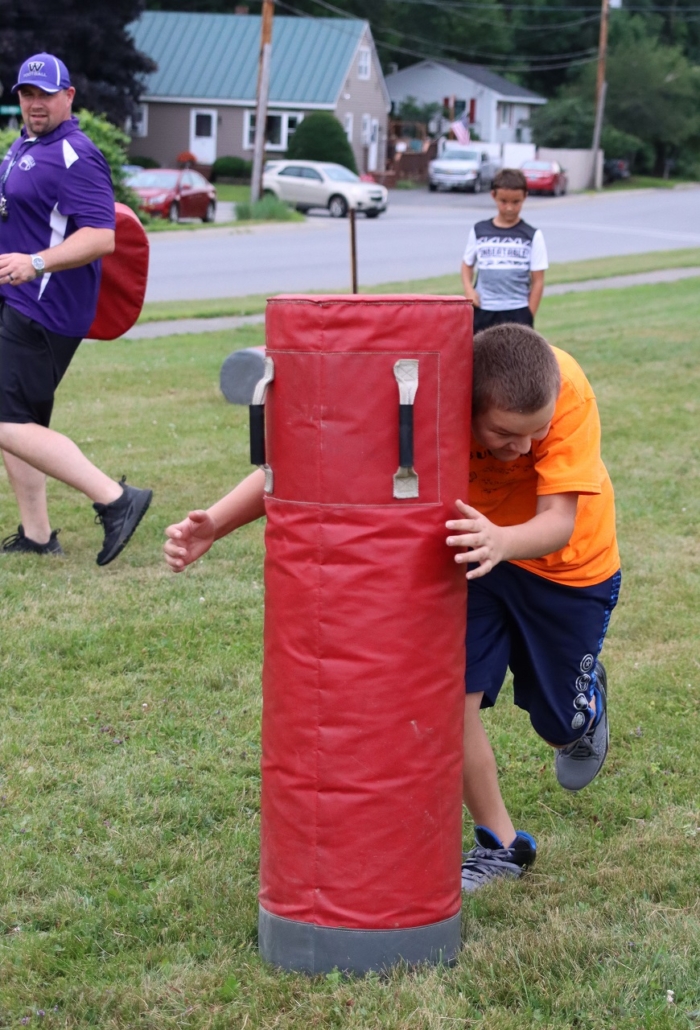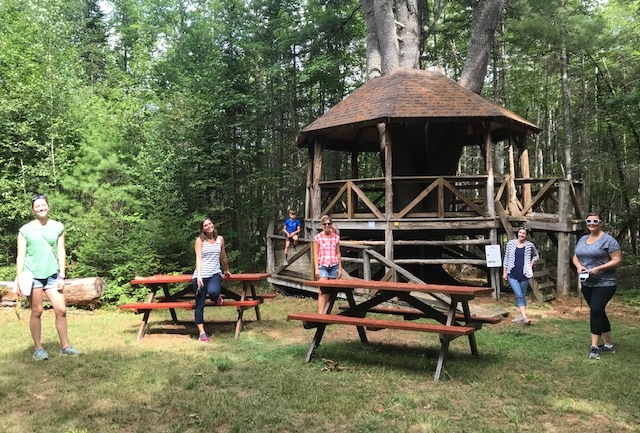
China school teachers get the China School’s Forest ready for students. (photo by Anita Smith)
Six animal cutouts stolen from the grounds
A few weeks ago, a heinous act was committed in the China School’s Forest. Someone snuck into the outdoor learning center and stole six of the animal cutouts that were set up along the trails to teach children about wildlife in the Maine woods.
“Not only did you steal them, you stole the hard work of middle school children and volunteers who made the project happen,” admonished a post added to the China School’s Forest Facebook page on July 22, shortly after the incident. “You stole the grant money that was used to make them. You stole the enjoyment and learning opportunity from hundreds of children and visitors to the school forest. You stole the desire to continue to do projects like this that our whole community can enjoy. You stole the pride our community feels with the entire school forest project.”
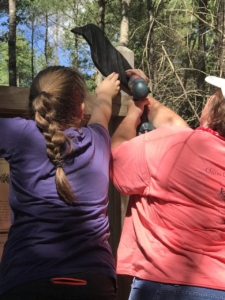
Danica Ferris, left, and Anita Smith putting up a crow cutout. (photo by Katie Reed)
The China School’s Forest, founded in 1995, is located behind the China Primary school and is designed to serve as an “outdoor classroom with trails and learning stations to teach children about the Maine forest in a real-life, hands-on setting.” The trails are also open to the general public.
In the current age of COVID-19, the China School’s Forest has become an important place for local teachers to hold classes in a safer, outdoor setting, and the Forest has been scrambling to get ready for the upcoming school year.
Thankfully, since the incident, community volunteers have rallied to help with the work.
“There has been a huge outpouring of volunteerism in the forest this summer,” says Anita Smith, administrator for the China School’s Forest.
Of the six animal cutouts stolen, three have been returned, says Smith. Additional cutouts have also recently been supplied by local residents Jim Burke and Katie Reed.
Katie Reed says she reached out to Joshua Newhall, of Madison, owner of Gridiron Woodworks, to make them. “Scrolling through Facebook, I came across a post from China Forest…[and] my daughter asked me if we could help replace them,” Reed explains. Her daughter, Danica Ferris, is a sixth grade student at China Middle School. “We did this because my daughter loves spotting the cutouts on the trail. You can see anything from a cat, skunk, bears and more,” she says. “[We’re] hoping the community gets to enjoy them for years to come.”
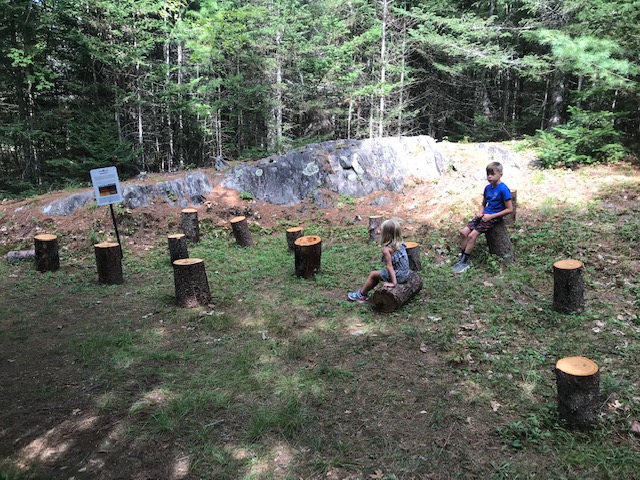
Lydia, left, and Luke Naegely test out the stump stools at the Geology outdoor classroom. (photo by Anita Smith)
That’s just the tip of the iceberg though, in terms of the work community members have accomplished in the last few months. Volunteers have been mowing and weed-whacking. Extra seating has been added to the Geology Station, and outdoor-themed art has been stenciled on the walls of the wooden classroom structures to remind children to practice social distancing.
In addition, Anita Smith says, “Nine new interpretive signs, manufactured by Leighton Signworks, in Oakland, have been installed to explain features from last winter’s harvest and thinning, and a few additional points of interest on the trails.”
The wood from last year’s harvesting is also being cut up and will be donated to local families. “At the end of July, we had a large crew of volunteers from Central Church,” says Smith. “They helped cut up trees that will be used for firewood for those in need this winter. They also stained picnic tables, water-sealed several structures, raked trails, trimmed brush, replaced the roof on the CPS entrance kiosk and donated two new tables to the outdoor classroom spaces.”
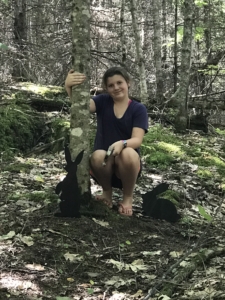
Danica Ferris, adding a hare and bunny. (photo by Katie Reed)
A “Firewood for Friends” event held last Saturday drew an additional eight volunteers who cut wood into workable sizes and stacked it for drying. “We got 1.5 cord cut today,” says Smith. “The wood will be distributed through the China for a Lifetime Committee or the town office as needed.”
Smith says another event will be held on Saturday, September 12, from 9 a.m. – noon. “People with chainsaws are needed as well as others to lug and stack the wood,” she notes.
Steve Childs, of SD Childs & Sons Excavation, in Palermo, has also donated gravel, which volunteers used to smooth and cover muddy areas of the trails.
It’s looking like, with the generous help from many volunteers in the community, the China School’s Forest is going to be ready to serve its purpose as an outdoor learning center when China schools open this month.
“I am so proud of our little town and grateful to those who have helped to make the Forest a place that everyone can enjoy and our students can use this fall,” says Smith. “The teachers and I are so appreciative of the help!”
For more information about the China School’s Forest or to find out how you can help, contact Anita Smith by email at chinaschoolsforest@gmail.com.
Contact the author at ericwaustin@gmail.com.
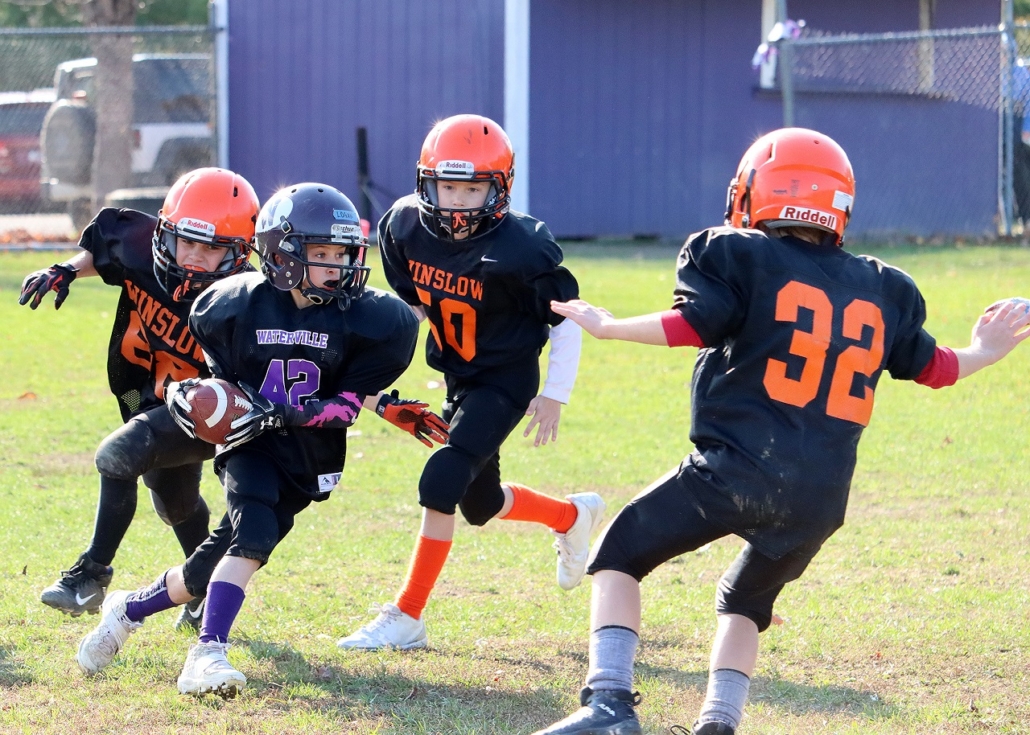


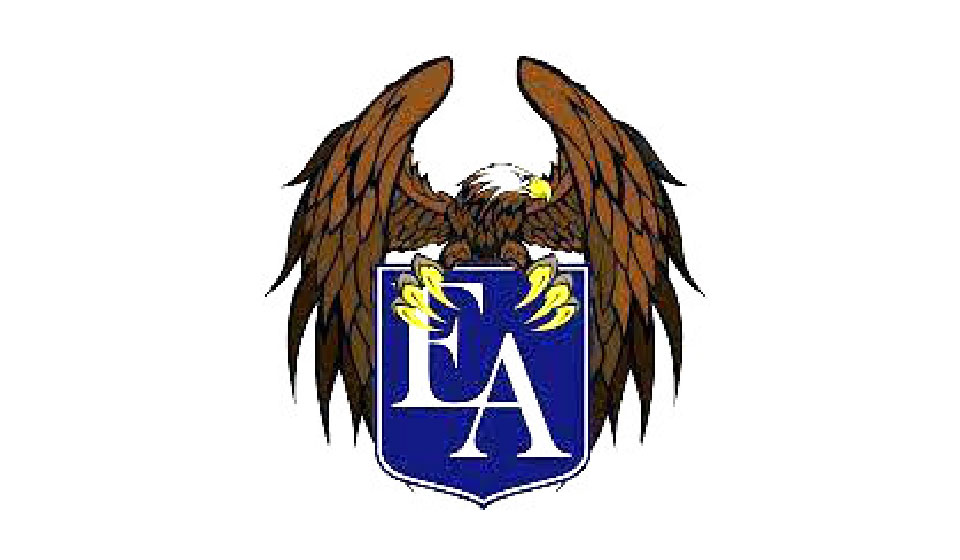
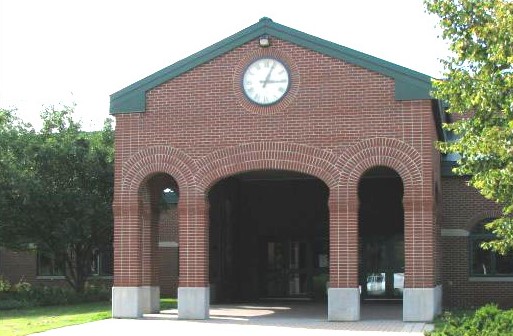
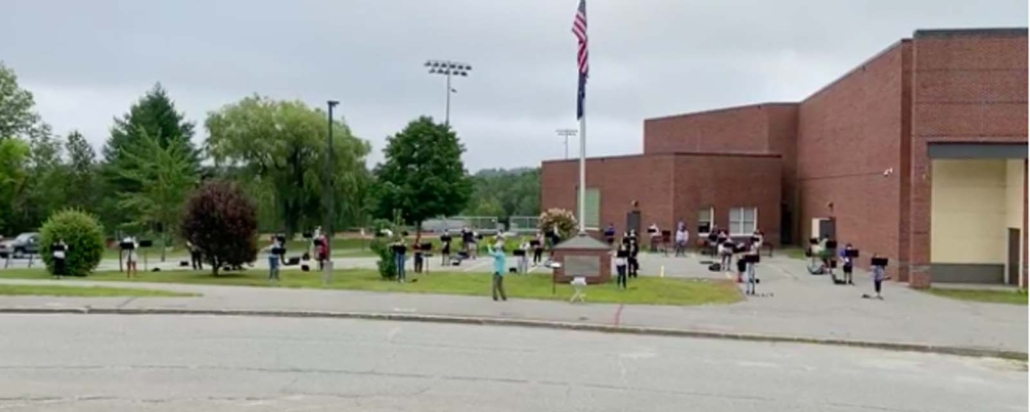
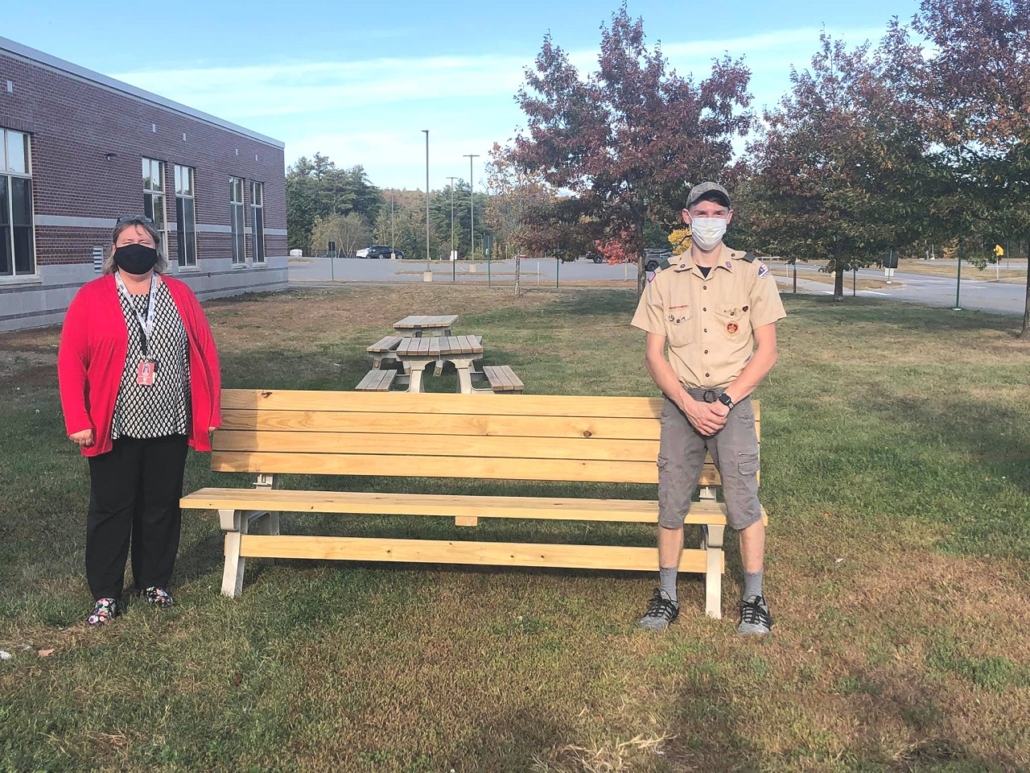
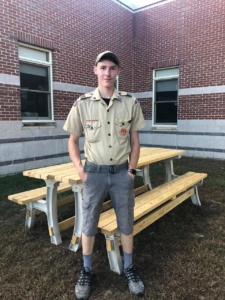
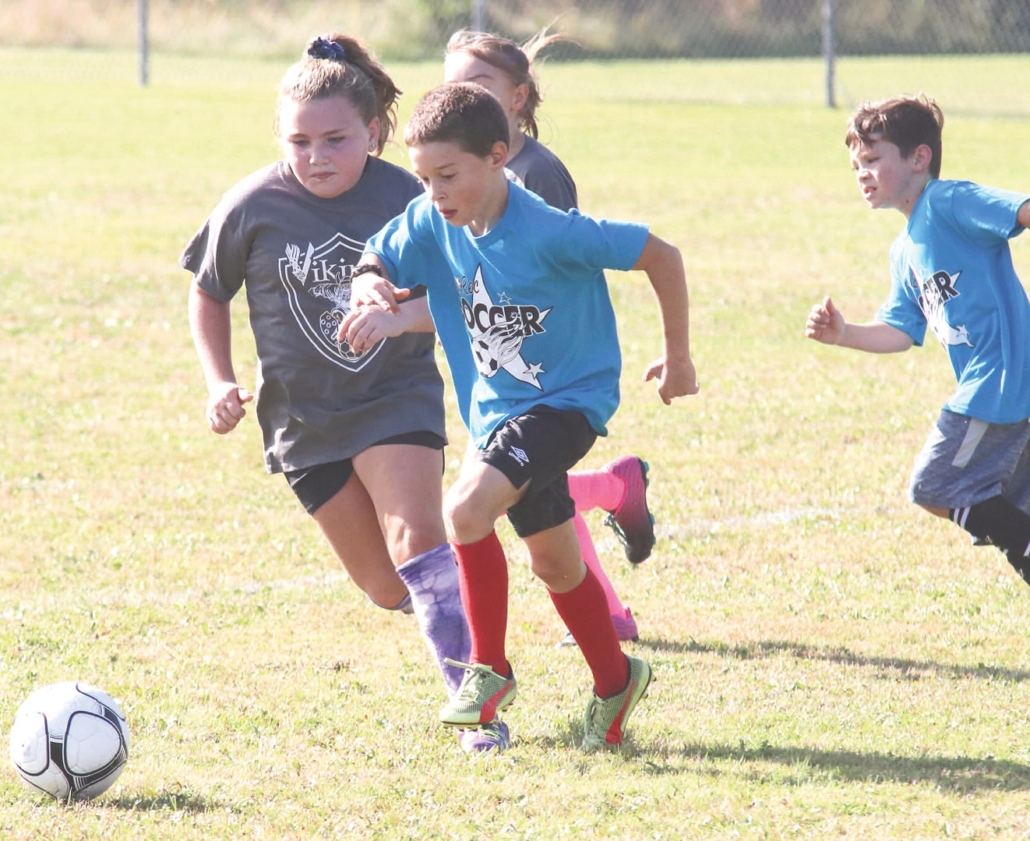




 Anna Schutte makes the deans’ list at Azusa Pacific University
Anna Schutte makes the deans’ list at Azusa Pacific University